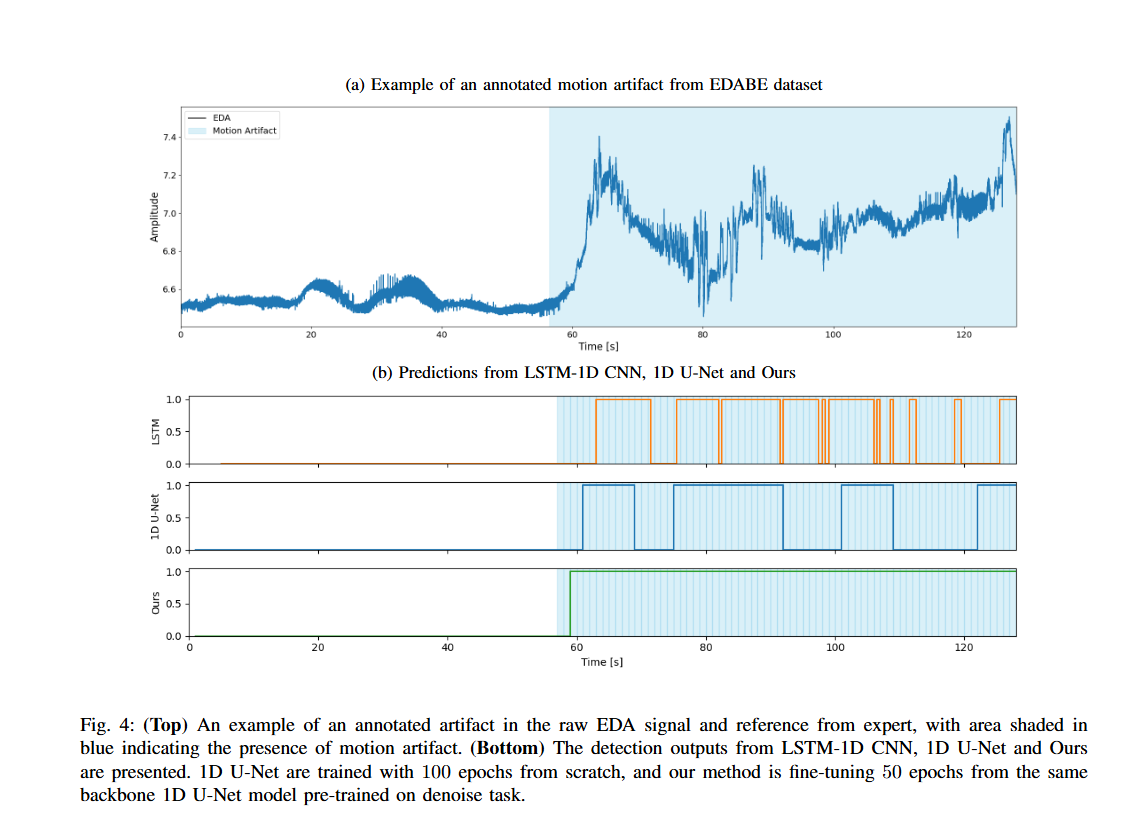Wearable EDA Quality Model improves SOTA
Published:
Improve Electrodermal activity (EDA) signal quality SOTA by $8\%$ by unsupervised pre-training
Abstract
Electrodermal activity (EDA) is a key indicator of sympathetic nervous system activation and a reliable marker of emotional arousal or stress. However, motion artifacts and connectivity issues often degrade EDA signal quality. To enable meaningful interpretation, it is essential to distinguish between high- and low-quality EDA signals. We propose an EDA signal quality index system leveraging unsupervised pre-training—a strategy widely used in natural language processing models such as GPT. Our approach achieve approximately $8\%$ in ROCAUC improvement compared to SOTA, while requiring only half the training epochs. This demonstrates that even with limited labeled data and a lightweight model, pre-training can significantly enhance EDA quality assessment, making it practical for real-time, wearable health applications.
Framework

Preliminary Results
Visualizations:

AUC Performance on EDABE-Test Recordings
* Reported performance from cited paper
† Performance from our implementation
All performance reported below are trained on raw EDA data from EDABE.
Fine-tuned from the Denoise pre-train task achieves highest average AUC at 0.851, outperforming EDABE by 12%, and U-Net by 8%, with a model size only approximately 1% of the EDABE model.
Table 1: ROCAUC Performance
| ROCAUC on EDABE-Test | Mean (Std) | Median | Min | Max |
|---|---|---|---|---|
| LSTM-1DCNN* [1] | 0.76 (0.060) | - | - | - |
| U-Net† [2] | 0.788 (0.087) | 0.809 | 0.652 | 0.896 |
| (Ours) Denoise-50 | 0.851 (0.089) | 0.866 | 0.717 | 0.974 |
| (Ours) Forecast-50 | 0.832 (0.088) | 0.855 | 0.694 | 0.947 |
| (Ours) Denoise & Forecast-200 | 0.831 (0.082) | 0.850 | 0.712 | 0.946 |
Table 2: Memory Footprints and Supervised Training Epochs
| Model | Memory | Train Epochs |
|---|---|---|
| LSTM* [1] | 26.74MB | - |
| U-Net† [2] | 0.28MB | 100 (98) |
| Ours | 0.28MB | 50 |
📚 References
[1] Llanes, L., Carrasco-Ribelles, M., Alcañiz Raya, M., & Marín-Morales, J. (2023). Electrodermal activity artifact correction benchmark (EDABE) (Version 2) [Dataset]. https://doi.org/10.17632/w8fxrg4pv5.2
[2] Kong, Y., Hossain, M. B., Peitzsch, A., Posada-Quintero, H. F., & Chon, K. H. (2024). Automatic motion artifact detection in electrodermal activity signals using 1D U-Net architecture. Computers in Biology and Medicine, 182, 109139. https://doi.org/10.1016/j.compbiomed.2024.109139
